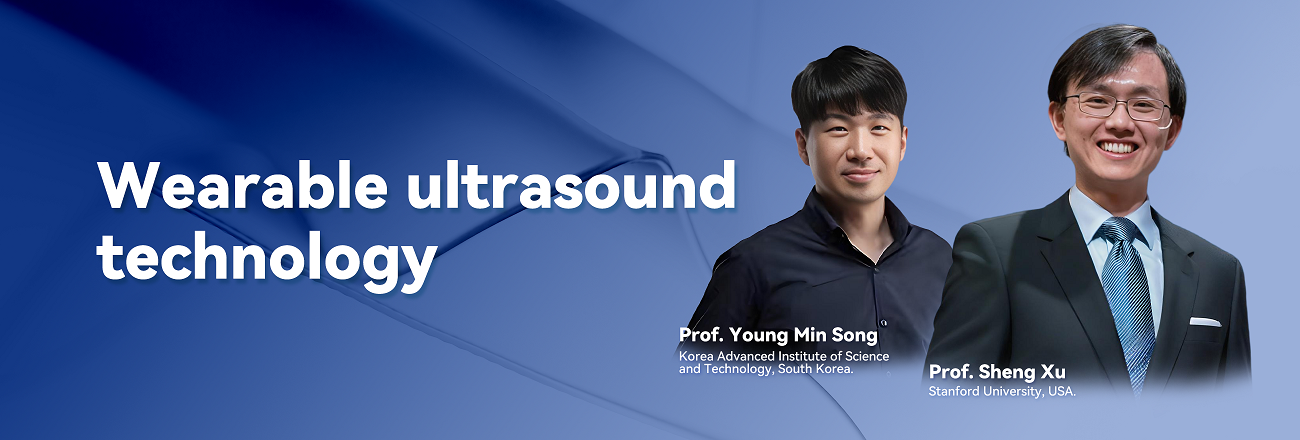Contents
Guest

Prof. Sheng Xu
Dr. Sheng Xu is a professor and the inaugural Director of Emerging Technologies in the Department of Anesthesiology, Perioperative and Pain Medicine at Stanford University. He earned his B.S. degree in Chemistry from Peking University and his Ph.D. in Materials Science and Engineering from the Georgia Institute of Technology. Subsequently, he pursued postdoctoral studies at the Materials Research Laboratory at the University of Illinois at Urbana-Champaign. His research group is interested in developing new materials and fabrication methods for soft electronics, with a particular focus on wearable ultrasound technology. His research has been presented to the United States Congress as a testimony to the importance and impact of NIH funding. He has received numerous honors, including the NIH Maximizing Investigators’ Research Award, NIH Trailblazer Award, Sloan Fellowship, IEEE EMBS Technical Achievement Award, ETH Zürich Materials Research Prize for Young Investigators, MRS Outstanding Early Career Investigator Award, and a finalist of the Blavatnik National Awards for Young Scientists. He is a Fellow of AIMBE, IEEE, and MRS.
Moderator

Professor Young Min Song
Professor Young Min Song is currently a faculty member in the School of Electrical Engineering at KAIST, which he joined in 2025. He received his B.S. in Biomedical Engineering from Yonsei University and earned his M.S. and Ph.D. degrees from GIST. Professor Song leads the Flexible Opto Electronics Laboratory (FOEL), where his research focuses on flexible optoelectronics, bio-inspired optics, nanophotonics, and optical neuromorphic devices. His group has made notable advances in areas such as artificial vision systems inspired by biological eyes, structural-color-based unclonable optical security technologies, ferroelectric neuromorphic image sensors, and nano-optical temperature visualization sensors for early safety monitoring. Drawing inspiration from natural structures and neural architectures, his work integrates materials science, optical engineering, and artificial intelligence to develop next-generation intelligent photonic systems with applications in sensing, security, energy, and health monitoring.
Abstract
The use of wearable electronic devices that can acquire vital signs from the human body noninvasively and continuously is a significant trend for healthcare. The combination of materials design and advanced microfabrication techniques enables the integration of various components and devices onto a wearable platform, resulting in functional systems with minimal limitations on the human body. Physiological signals from deep tissues are particularly valuable as they have a stronger and faster correlation with the internal events within the body compared to signals obtained from the surface of the skin. In this presentation, I will demonstrate a soft ultrasonic technology that can noninvasively and continuously acquire dynamic information about deep tissues and central organs. I will also showcase examples of this technology's use in recording blood pressure and flow waveforms in central vessels, monitoring cardiac chamber activities, and measuring core body temperatures. The soft ultrasonic technology presented represents a platform with vast potential for applications in consumer electronics, defense medicine, and clinical practices.












